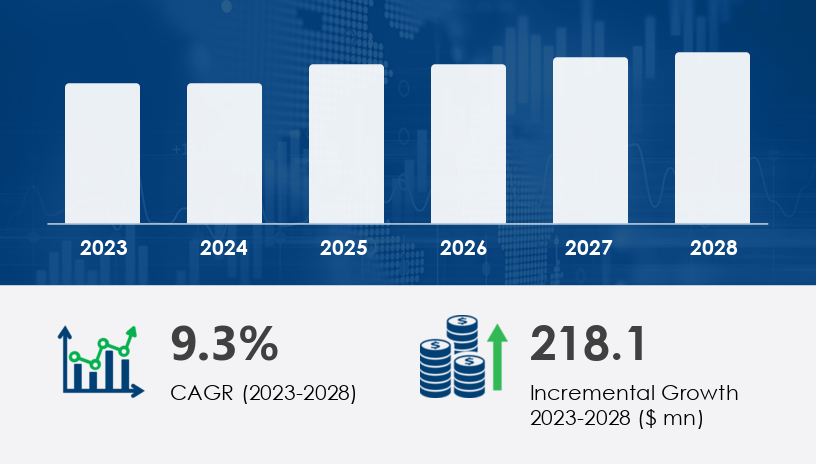The gold nanorods market has undergone a significant transformation over the past decade. In 2019, the market was primarily driven by research and development activities in the medical and electronics sectors. By 2023, the market had expanded, with applications in photothermal therapy, drug delivery, and biosensing gaining traction. Looking ahead to 2024–2028, the market is poised for substantial growth, projected to increase by USD 218.1 million at a compound annual growth rate (CAGR) of 9.3%. This growth is fueled by advancements in medical applications, particularly in cancer treatment, and the expanding use of gold nanorods in electronics and energy sectors.
For more details about the industry, get the PDF sample report for free

Legacy Disruption: Gold nanorods have revolutionized cancer treatment by enabling photothermal therapy, where absorbed light is converted into heat to target tumor cells.
New Strategy Emerging: The focus is shifting towards enhancing the biocompatibility and functionalization of gold nanorods for targeted drug delivery and imaging.
Analyst Insight: The medical subsegment is expected to dominate the application segment during 2024–2028, driven by increasing demand for advanced cancer treatments.
Business Case: A leading pharmaceutical company has developed a gold nanorod-based drug delivery system that improves the efficacy and reduces the side effects of chemotherapy drugs.
Market Stats: The medical segment was valued at USD 137.80 million in 2018 and is projected to witness significant growth during the forecast period.
Legacy Disruption: Gold nanorods have enabled advancements in electronics by serving as components in transistors, solar cells, and printable inks.
New Strategy Emerging: The emphasis is on leveraging the unique optical properties of gold nanorods to enhance the performance of electronic devices and energy systems.
Analyst Insight: The electronics & semiconductor segment emerged as the fastest-growing in the global market for gold nanorods during the forecast period.
Business Case: An electronics manufacturer has integrated gold nanorods into their solar panels, resulting in improved energy conversion efficiency.
Market Stats: Gold nanorods are used in various applications such as solar cells, flash memory devices, and LCDs.
See What’s Inside: Access a Free Sample of Our In-Depth Market Research Report.
Legacy Disruption: Gold nanorods have enhanced diagnostic capabilities by serving as probes in biosensing applications, enabling the detection of metal ions like arsenic, mercury, lead, and copper.
New Strategy Emerging: The focus is on developing portable and cost-effective diagnostic tools utilizing gold nanorods for early disease detection.
Analyst Insight: Gold nanorods' physical and chemical properties, including high reactive surface area and electron structure, make them valuable in biosensing applications.
Business Case: A biotech startup has developed a handheld device that uses gold nanorods to detect biomarkers for early-stage cancer, providing results within minutes.
Market Stats: Gold nanorods are utilized in biosensing for diagnostics, imaging, and sensing applications due to their binding properties and biocompatibility.
1. Technological Innovation: Companies are investing in research and development to enhance the properties of gold nanorods, such as improving their stability and functionalization for specific applications.
2. Strategic Collaborations: Partnerships between nanotechnology firms and healthcare providers are accelerating the commercialization of gold nanorod-based therapies and diagnostics.
3. Market Expansion: Companies are expanding their presence in emerging markets, particularly in Asia-Pacific, where demand for advanced medical and electronic technologies is growing.
Expert Quote: "The integration of gold nanorods into medical and electronic applications is poised to transform industries by enabling more precise and effective treatments and devices."
The Gold Nanorods Market is expanding rapidly due to increasing demand across diverse nanotechnology applications, particularly in healthcare technology and electronic devices. The exceptional optical properties of gold nanorods, especially their near-infrared absorption, make them ideal for biomedical applications such as photothermal therapy, cancer treatment, and tissue imaging. Their role in drug delivery is also gaining traction, offering solutions for targeted delivery, including both active targeting and passive targeting mechanisms. Key features like biocompatibility, high stability, and optimized particle size support their suitability in drug carriers and therapeutic agents. The market benefits from innovations in nanoengineering and demand from the electronics industry, where optical sensors and sensing technology are crucial. With increased focus on healthcare innovations, gold nanorods are emerging as vital components in modern nanotech solutions.
1. Personalized Medicine: By 2028, gold nanorods are expected to play a pivotal role in personalized medicine, enabling targeted therapies tailored to individual patients' genetic profiles.
2. Smart Electronics: The development of smart electronic devices incorporating gold nanorods will lead to more efficient and compact technologies.
3. Environmental Monitoring: Gold nanorods will be instrumental in developing sensors for real-time environmental monitoring, detecting pollutants and toxins with high sensitivity.
Company Example: NanoHybrids Inc. is at the forefront of integrating gold nanorods into medical imaging systems, enhancing the resolution and accuracy of diagnostic imaging.
As gold nanorods continue to revolutionize various industries, how can companies leverage their unique properties to create sustainable and scalable solutions?
1. Invest in R&D: Prioritize research and development to explore new applications of gold nanorods and enhance their properties.
2. Foster Collaborations: Engage in partnerships with academic institutions and industry leaders to accelerate innovation and commercialization.
Get more details by ordering the complete report
Current research in the Gold Nanorods Market emphasizes their role in enhancing precision medicine, particularly through advanced cancer therapy and chemotherapy enhancement. Innovations in nanoparticle synthesis and surface chemistry have enabled the creation of highly effective gold conjugates used in molecular imaging, optical tomography, and medical diagnostics. These nanorods function as reliable imaging agents and diagnostic tools, with potential in biosensor development and infrared heating for thermal ablation of tumors. Their utility in tumor targeting and molecular-level detection continues to grow, driven by improvements in nanoparticle stability. Furthermore, ongoing nanomaterial research focuses on developing applications in optical tomography and biosensors, pushing the boundaries of nanoengineering in biomedical imaging. As research advances, gold nanorods are becoming central to next-generation tools in diagnostics and targeted therapies.
Safe and Secure SSL Encrypted